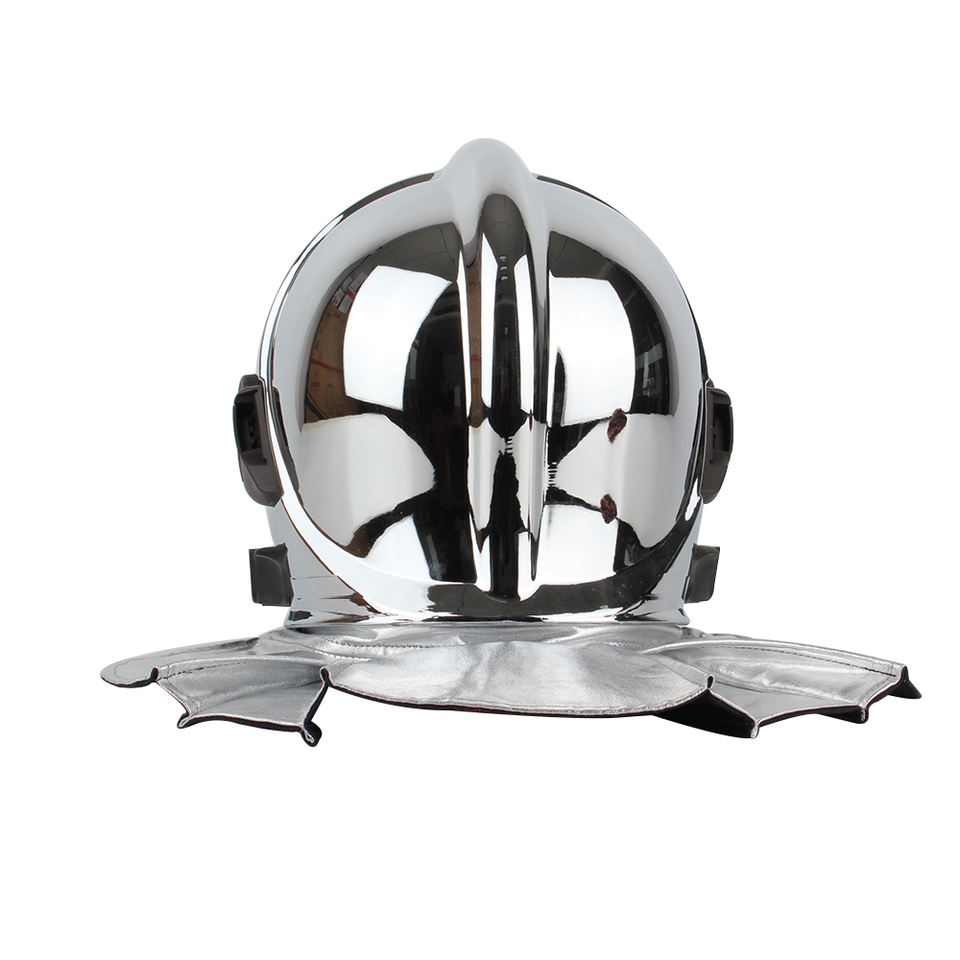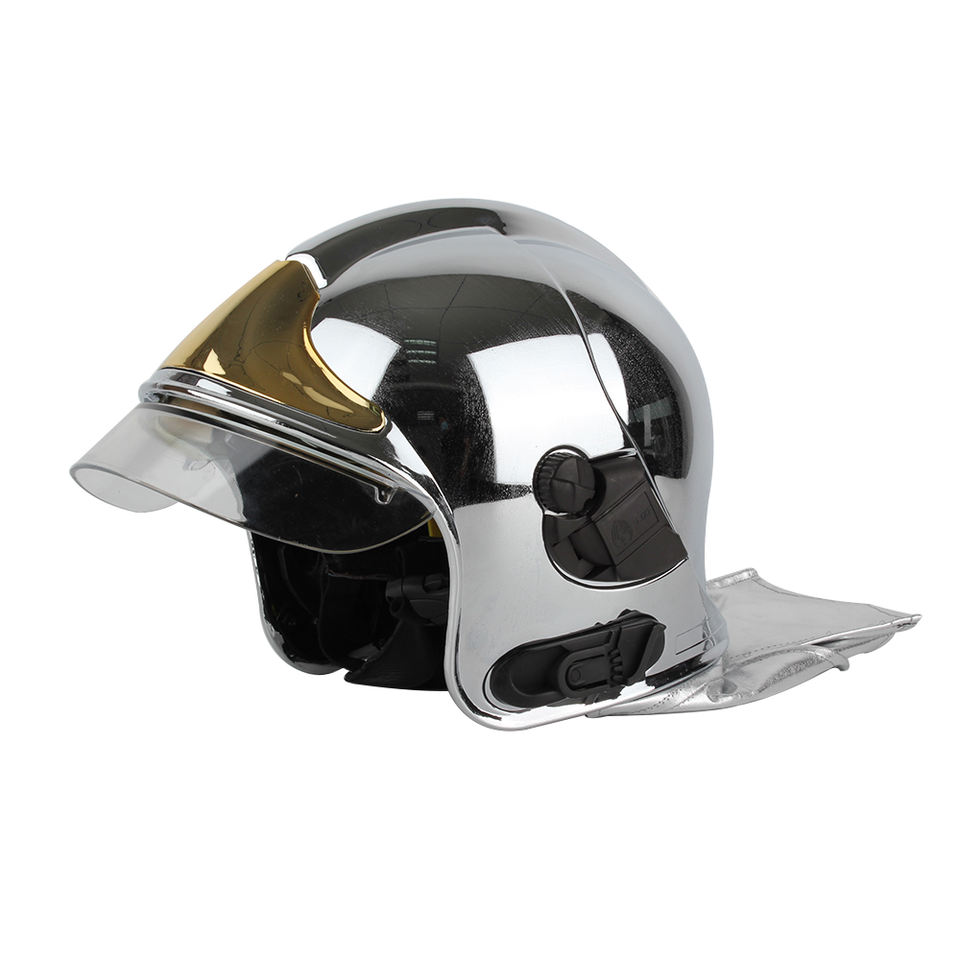Fire Safety Helmet – Lightweight, Heat-Resistant, Certified
Field Notes on the Modern Fire Safety Helmet
I spend a lot of time in stations and training yards, and one thing hasn’t changed: when the room flashes over, the helmet either earns its keep—or it doesn’t. This year’s gear cycle has been buzzing about full-face visors, better thermal stability, and pragmatic pricing. The Fire Protection Fighting Safety Helmet coming out of Hebei is one of those pieces I kept hearing about from logistics managers and, surprisingly, from firefighters who care about fit as much as flame.

Industry trends (and what crews actually notice)
- Full-face protection with EN 14458-rated visors is becoming the default for interior attack—less fogging, better peripheral vision.
- Lighter shells without sacrificing heat resistance. In fact, many customers say weight balance matters more than grams on paper.
- Real QA data: more buyers now request third-party EN 443 reports before issuing purchase orders.
- Customization for unit identity—logos, high-vis tapes—drives larger, coordinated buys.
Product snapshot: Fire Protection Fighting Safety Helmet
| Spec | Details (≈, real-world use may vary) |
|---|---|
| Type | Full-face Fire Safety Helmet for structural firefighting |
| Shell material | Heat-resistant ABS blend |
| Visor | Large polycarbonate face shield; anti-scratch/anti-fog coating |
| Standards | EN 443; CE per EU 2016/425; visor compatibility with EN 14458 concepts |
| Fit | Ratchet adjustment ≈ 54–62 cm, cushioned suspension |
| Weight | Around 1.3–1.6 kg depending on options |
| Certifications | EN443, CE (declared); supplier states EN443 testing |
| OEM | Logo & packaging (min. order ≈ 500 pcs); single-item sales supported |
| Origin | 26 YongPing Road, Northern Industrial Base, Hengshui, Hebei, China |
How it’s made and tested (short version)
Materials: ABS shell (injection-molded), polycarbonate visor, flame-resistant comfort liner, chinstrap with quick-release. Methods: molding and trimming, visor curing/coating, assembly, then QA.
Testing per EN 443 includes shock absorption, penetration resistance, radiant heat exposure, flame spread, retention system strength, and field of vision. A recent factory batch report I saw showed comfortable margins across impact and penetration, and—tellingly—stable visor transparency after heat cycling.

Where it’s used
- Interior structural firefighting and overhaul
- Rescue and vehicle extrication (visor helps with debris, to be honest)
- Training burns and hot-work standby
Service life: typically ≈ 8–10 years with routine inspection, but follow departmental policies; NFPA guidance for retirement timelines is stricter in some jurisdictions.
Customer feedback (informal)
“The visor travel feels smooth even after soot exposure.” “Balance is decent—less neck fatigue on long searches.” A few teams asked for extra reflective trim; OEM made that easy.
Vendor landscape (quick comparison)
| Vendor | Standards | Customization | Lead time | Notes |
|---|---|---|---|---|
| Good Safety Helmet (Hebei, CN) | EN 443, CE (declared) | Logos/packaging, MOQ ≈ 500 | Around 25–45 days | Cost-effective; factory-direct QA access |
| EU Brand A | EN 443; EN 14458 visor | Broad palette; small-batch options | 2–8 weeks | Premium trims; higher list pricing |
| US Brand B | NFPA 1971/NFPA 1951 | Unit IDs, colors | 4–10 weeks | Strong aftermarket support |
Case notes
A logistics chief in a coastal city switched 200 helmets to this Fire Safety Helmet for uniformity. The kicker wasn’t price—it was visor clarity under salt-laden air. After three months of drills and two real multi-room fires, the visors still passed unit checks for optical grade. Not scientific, but telling.
Care, replacement, and practical tips
- Clean with mild detergent; avoid solvents that haze polycarbonate.
- Inspect after high-heat events; if in doubt, retire.
- Document exposure and service life. Many departments target ≤ 10 years, sometimes sooner.

Bottom line: this Fire Safety Helmet checks the EN boxes, offers sensible OEM options, and—this matters—feels ready for the messy reality of the job.
References
- EN 443:2008 Helmets for firefighting in buildings and other structures. CEN.
- Regulation (EU) 2016/425 on Personal Protective Equipment (CE marking).
- NFPA 1851:2020 Standard on Selection, Care, and Maintenance of Protective Ensembles for Structural Fire Fighting.
- EN 14458:2018 Personal eye-equipment—Face shields and visors for firefighters and high-performance industrial use.
-
Essential Guide to Safety Helmets for the Oil and Gas Industry
NewsNov.24,2025
-
Essential Guide to Safety Helmet for Baby – Protect Little Explorers with Confidence
NewsNov.24,2025
-
Comprehensive Guide to Safety Helmet Factory – Global Insights & Innovations
NewsNov.23,2025
-
Rockman Safety Helmet: Ultimate Industrial Head Protection Guide
NewsNov.23,2025
-
Race Safety Helmet – Essential Protection for Motorsport Champions
NewsNov.22,2025
-
Offshore Safety Helmet Guide: Protecting Workers in Harsh Marine Environments
NewsNov.22,2025
